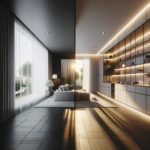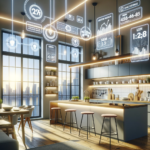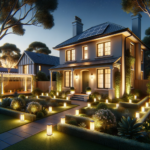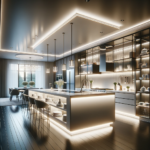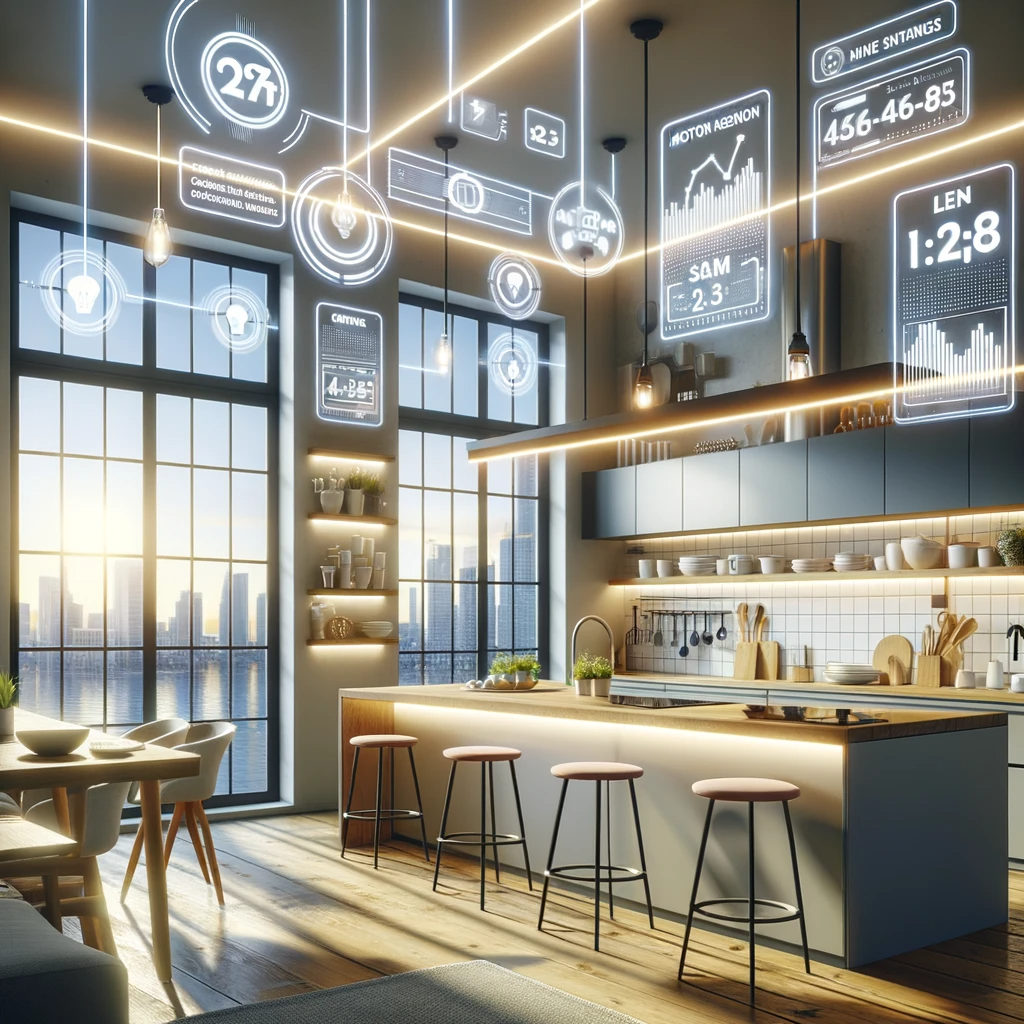Introduction

The Power of Illumination: Unveiling the Secrets of Perfect Lighting

Proper lighting in a room holds significant importance as it greatly impacts the overall atmosphere, functionality, and aesthetic appeal. Whether it’s a cozy living area, a bustling kitchen, or a productive office space, getting the lighting requirements just right can transform any space into a harmonious and inviting environment. By considering various factors when calculating lighting requirements, you can ensure that every corner of the room is beautifully illuminated to meet your specific needs and preferences.
Bringing Light to Shadows: Factors for Calculating Lighting Requirements
When determining the optimal lighting for a room, several crucial factors come into play. These factors not only determine the overall brightness but also influence the mood, functionality, and practicality of the space. First and foremost is identifying the room’s primary purpose – whether it’s an area for relaxation or work – as this will guide subsequent decisions about illumination levels.
Additionally, recognizing specific activities within the room such as reading, cooking, or working enables you to tailor lighting based on task requirements. Taking into account any special features like artwork or display shelves will help accentuate focal points and add an artistic touch to your lighting design scheme.
Understanding the Basics of Lighting
Definition and Types of Lighting
Lighting can be categorized into three main types: ambient, task, and accent lighting. Ambient lighting provides overall illumination in a room, creating a comfortable and inviting atmosphere.
It can be achieved through the use of ceiling fixtures, wall-mounted lights, or even natural light from windows. Task lighting, on the other hand, serves a specific purpose such as reading or cooking.
It is designed to provide focused and brighter illumination in areas where specific activities are performed. Common examples include desk lamps, under-cabinet lights in kitchens, or pendant lights above workspaces.
Accent lighting is used to highlight particular objects or architectural features within a space. This type of lighting creates visual interest and adds depth to the room’s ambiance.
Light Sources: Incandescent, Fluorescent, LED
Incandescent bulbs produce light by heating a filament inside them until it glows. While they are affordable and widely available, they are not very energy efficient compared to other options. Fluorescent bulbs utilize gas discharge to create light when an electric current passes through them.
They are more efficient than incandescent bulbs but have drawbacks such as containing small amounts of mercury and requiring special disposal methods due to environmental concerns. LED (light-emitting diode) bulbs have gained popularity due to their energy efficiency and long lifespan.
They produce light by passing an electrical current through semiconducting material that emits photons (light particles). LEDs come in various colors and can be dimmable or non-dimmable depending on the specific model chosen.
Color Temperature and Its Impact on Mood and Ambiance
Color temperature refers to how warm or cool the light appears visually. It is measured in Kelvin (K) units. Lower Kelvin values result in warmer tones with more yellow or orange hues, while higher Kelvin values produce cooler tones with bluish or white hues.
Warm lighting (color temperatures around 2700K-3000K) creates a cozy and relaxing atmosphere, often used in bedrooms or living areas. Cool lighting (color temperatures around 4000K-5000K) provides a bright and energetic ambiance commonly found in offices or kitchens.
The choice of color temperature can significantly impact the mood and ambiance of a room. For instance, warm lighting is often preferred for creating a soothing environment, promoting relaxation, and enhancing comfort.
In contrast, cool lighting is ideal for areas where productivity and focus are crucial. Understanding the basics of color temperature can help you choose the right lighting solution to achieve the desired atmosphere in your room.
Determining the Room’s Purpose and Activities
Assess the primary function of the room. Consider if it will serve as a living room, kitchen, office, or any other specific purpose. Determine the main activities that will take place in the room.
Identify if it will be used for reading, cooking, working, or any other specific tasks. Analyze the size and layout of the room to better understand how lighting can be optimized for these activities.
Identifying Specific Activities within the Room
Recognize the specific tasks that will occur within the room to determine appropriate lighting requirements. If reading is a common activity, consider providing task lighting near seating areas such as lamps or adjustable sconces.
For cooking areas in kitchens, ensure adequate illumination over countertops and stovetops with bright ambient lighting or under-cabinet lights. In an office space, focus on providing ample task lighting at workstations to minimize eye strain and improve productivity.
Considering Any Special Requirements or Focal Points
Take into account any special requirements that may influence lighting decisions within the room. If there are artworks on display, install accent lighting to highlight them effectively without causing glare or shadows. Consider incorporating dimmers to adjust light levels based on different moods or occasions in rooms used for entertaining guests.
If there are display shelves or cabinets with collectibles or decorative items, consider adding discreet spotlights to enhance their visibility and add visual interest. By carefully considering these aspects while determining a room’s purpose and activities, one can plan efficient and effective lighting solutions that enhance both functionality and aesthetics in any space.
Calculating Illuminance Levels
Defining illuminance and its measurement unit (lux or foot-candles)
Illuminance refers to the amount of light falling on a surface. It is measured in lux or foot-candles, depending on the region.
Lux is the international unit of measurement, while foot-candles are commonly used in the United States. Both units indicate the intensity of light reaching a specific area.
Lux measures lumens per square meter, and foot-candles measure lumens per square foot. By understanding illuminance and these measurement units, you can accurately determine the lighting requirements for any given space.
Recommended illuminance levels for different types of rooms/activities
The recommended illuminance levels vary based on the type of room or activity taking place within it. Here are some guidelines to help you determine appropriate levels:
- In living areas, such as bedrooms or living rooms, ambient lighting should provide around 20-30 lux to create a cozy atmosphere.
However, when engaging in tasks like reading or working on a puzzle, task lighting should reach around 300-500 lux to ensure proper visibility.
- Kitchens require more intense lighting due to various activities like cooking and food preparation.
For ambient lighting in kitchens, aim for 50-75 lux to create an inviting ambiance. Task lighting in these areas should be brighter at approximately 500-750 lux to ensure clear visibility during culinary tasks.
- Offices demand adequate illumination for optimal productivity. Ambient lighting should offer approximately 300-500 lux throughout the workspace to maintain overall brightness without causing strain on the eyes.
For detailed tasks like reading documents or working with small objects, task lighting should provide between 750-1000 lux. By considering these recommended illuminance levels for different types of rooms and activities within them, you can achieve well-balanced and suitable lighting conditions that enhance both functionality and aesthetics.
Determining Lumens Needed
Calculating lumens based on desired illuminance level:

To determine the number of lumens needed for a room, you can use a simple formula. Multiply the area of the room in square meters by the required illuminance level in lux. The result will give you the total number of lumens needed to adequately light up the space.
For example, let’s say you have a living room with an area of 20 square meters and you want to achieve an ambient lighting level of 30 lux. To calculate the necessary lumens, you would multiply 20 square meters by 30 lux, which equals 600 lumens.
This means that to properly illuminate your living room, you would require a light source that emits at least 600 lumens. It’s important to note that different activities within a room may require varying levels of illuminance.
For instance, if you have a desk in your living room where you often work or read, you might need task lighting with higher illuminance levels. In such cases, it’s advisable to calculate and add the required lumens for task lighting separately from ambient lighting to ensure optimal brightness for specific tasks.
Remember that these calculations provide a general guideline for determining illumination requirements based on average conditions. Personal preferences and specific needs may lead to adjustments in the final lighting design plan.
Selecting Appropriate Light Fixtures and Bulbs
Understanding light fixture terminology:
To choose the right light fixtures for your room, it’s essential to familiarize yourself with some commonly used terms. Downlights or recessed lights, for instance, are fixtures that are installed into a ceiling or wall and emit light downwards. These fixtures create a sleek and modern look while providing focused illumination.
Pendant lights or chandeliers, on the other hand, hang from the ceiling by a chain or cord and offer both functional and decorative lighting. They come in various sizes and styles to suit different room aesthetics.
Wall sconces are mounted on walls and direct light upwards or downwards, providing accent lighting or ambient illumination depending on the design. Floor lamps are versatile free-standing fixtures that can be easily moved around to provide additional lighting where needed.
Downlights/recessed lights
Downlights, also known as recessed lights or can lights, offer a clean and unobtrusive lighting solution for any room. These fixtures are installed into the ceiling or wall cavity, leaving only the trim visible. With their adjustable directionality options, downlights allow you to focus the light precisely where you need it most—whether it’s illuminating artwork on a wall or highlighting specific areas of a room.
Pendant lights/chandeliers
Pendant lights and chandeliers add elegance and style to any space while providing functional lighting. Pendant lights typically hang from a cord or chain in single units or clusters at various heights. They are perfect for creating focused task lighting above kitchen islands or dining tables while adding an aesthetic element to the room’s decor.
Chandeliers, on the other hand, feature multiple arms with individual light sources suspended from the ceiling by chains. They provide both ambient illumination and serve as eye-catching focal points in entryways, living rooms, or dining areas.
Wall sconces
Wall sconces are versatile fixtures that can be mounted on walls to provide additional lighting options. They come in a variety of styles and designs, ranging from simple and modern to ornate and traditional.
Wall sconces are ideal for adding accent lighting or creating a warm ambiance in hallways, bedrooms, or bathrooms. They can be installed as single units or in pairs for balanced illumination and visual appeal.
Floor
Floor lamps offer flexibility in terms of placement and functionality. These free-standing fixtures are designed to sit on the floor and typically consist of a base, a pole, and a lampshade.
Floor lamps come in various styles such as torchiere lamps that direct light upwards for ambient illumination or task-oriented reading lamps with adjustable heads. They can be positioned strategically in corners, beside furniture pieces, or near reading nooks to provide additional lighting where it’s needed most.
Conclusion
Selecting the appropriate light fixtures and bulbs is crucial to achieving the desired lighting requirements for your room. Understanding the terminology associated with different types of fixtures empowers you to make informed decisions based on both functionality and aesthetics.
Whether you opt for downlights/recessed lights for focused illumination, pendant lights/chandeliers for an elegant touch, wall sconces for accent lighting versatility, or floor lamps to add a practical yet stylish element – each choice plays an essential role in creating the perfect ambiance within your space. So go ahead, explore the options available within each category and let your creativity shine through as you select the ideal fixtures that will transform your room into a well-lit haven tailored just for you.
